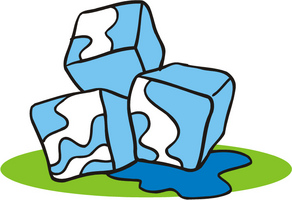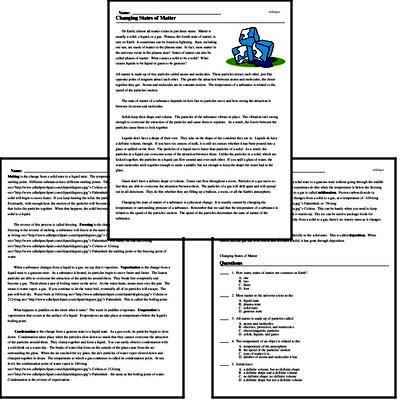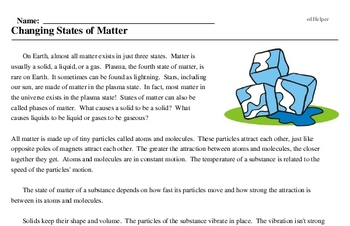Changing States of Matter
On Earth, almost all matter exists in just three states. Matter is usually a solid, a liquid, or a gas. Plasma, the fourth state of matter, is rare on Earth. It sometimes can be found as lightning. Stars, including our sun, are made of matter in the plasma state. In fact, most matter in the universe exists in the plasma state! States of matter can also be called phases of matter. What causes a solid to be a solid? What causes liquids to be liquid or gases to be gaseous?
All matter is made up of tiny particles called atoms and molecules. These particles attract each other, just like opposite poles of magnets attract each other. The greater the attraction between atoms and molecules, the closer together they get. Atoms and molecules are in constant motion. The temperature of a substance is related to the speed of the particles' motion.
The state of matter of a substance depends on how fast its particles move and how strong the attraction is between its atoms and molecules.
Solids keep their shape and volume. The particles of the substance vibrate in place. The vibration isn't strong enough to overcome the attraction of the particles and cause them to separate. As a result, the forces between the particles cause them to lock together.



